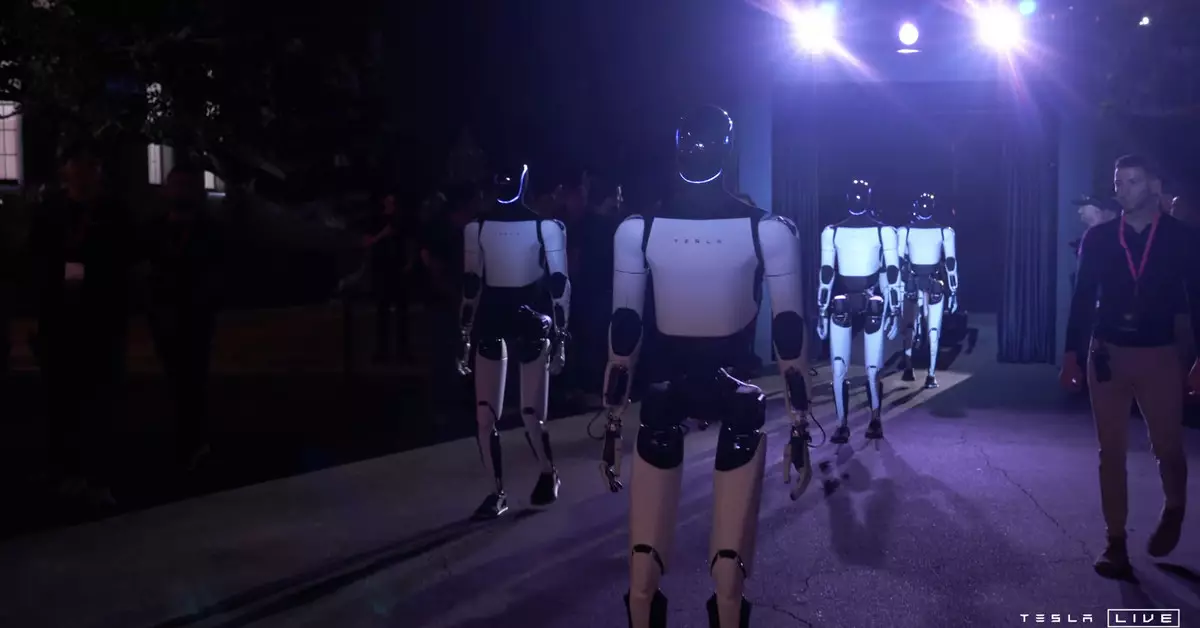The automotive industry is undergoing a seismic shift, and Tesla stands at the vanguard of this transformation not only through electric vehicles but also through cutting-edge robotics. During a recent Cybercab event, Tesla’s CEO, Elon Musk, unveiled the much-anticipated Optimus humanoid robot alongside the launch of the company’s new Robovan. This presentation provided insight into how Tesla is combining robotic technology with everyday life, showcasing the potential for humanoid robots to interact closely with humans and perform mundane tasks.
Musk’s ambitious assertion that the Optimus robot could “do anything” hints at a future where humans and robots coexist, navigating daily life together. Whether it is walking your dog, watering plants, or even serving drinks, Musk’s vision suggests that these robots could embody an advanced layer of convenience in the home and workplace. Targeted at a long-term price range of $20,000 to $30,000, the Optimus aims to penetrate the consumer market significantly, potentially redefining how we perceive personal assistance.
The imagery from the event showed Optimus robots performing simplistic tasks, such as holding ice cups or engaging in a playful game of rock-paper-scissors with attendees. While these demonstrations didn’t showcase the robots executing highly complex tasks, they did set the stage for a gradual introduction of these machines into everyday scenarios. This aligns with Musk’s previous statements about the evolution of the robot’s capabilities, which are expected to include practical functions by the end of the year.
Despite the flashy display and optimistic projections, skepticism surrounds the fully realized potential of Tesla’s robots. The initial presentation in 2021 featured an actor in a robot suit dancing humorously, raising questions about the seriousness of the endeavor. The transition from a crude prototype in 2022 to the current Optimus raises doubts regarding the quality and effectiveness of the robots once they enter the market. Will they be able to deliver on the promises made by their creators? Moreover, lingering concerns revolve around the practicalities of integrating such robotics into households, especially regarding safety and reliability.
Looking ahead, if Tesla can successfully overcome these hurdles, the potential market impact of Optimus robots could be transformative. Society might witness a paradigm shift where manual labor is increasingly relegated to machines, allowing humans to focus on more creative and complex endeavors. This future not only raises questions about job displacement but also sparks discussions surrounding the ethical implications of robotic assistance.
The unveiling of Tesla’s Optimus robots and the Robovan signifies a crucial step towards creating a more automated future. While the road ahead is fraught with challenges, Musk’s ambitious vision could one day lead to a world where humanoid robots are as commonplace as electric vehicles. The journey toward practical, helpful robots has only just begun, and society must prepare for the complexities that this new technological frontier will bring.

